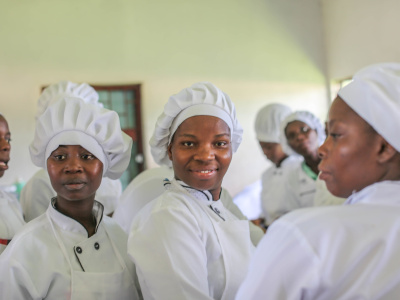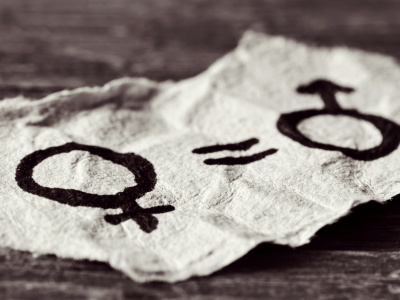
Four opportunities to give to gender the importance it deserves in EU policy and external spending
Many think that changing the direction of the EU policy ‘oil tanker ship’ is virtually impossible and that it’s much easier to hook initiatives onto the direction it’s already heading in instead. This is also the case when trying to give greater importance to gender equality in the EU’s future international and development cooperation spending. The year 2019 provides four opportunities for this and, if taken, they could significantly help to turn good EU rhetoric into more strategic action.
The pre-programming of the new proposed €89.2 Neighbourhood, Development and International Cooperation Instrument (NDICI) has already begun. It will run to the end of the year until programming will properly start.
Understanding the programming process isn’t easy but the diagram below (click on ‘download’ button to enlarge), together with a longer analytical publication specifically on programming, can help to make sense of it:

The NDICI has a specific horizontal spending target of 20% for human development and social inclusion, including gender equality and women’s empowerment. Several opportunities could be seized to concretise the commitments to gender equality reflected in the NDICI, let’s see which ones they are.
Four opportunities not to miss
The analytical and strategic assessment phase of pre-programming and the country and regional assessments, during the first half of 2019, constitute the first opportunity to give gender equality a more central role in EU policy and external spending.
Good gender analysis, whenever available, should be part of the country and regional assessment processes and lead to more strategic choices. Contextual gender analysis should also be strongly encouraged.
The EU’s commitments to promoting gender equality, as outlined in the Gender Action Plan II (GAP II) and beyond, should ensure that at least some gender analysis makes it to the country assessments and to the first notes for cooperation that EU Delegations will be producing.
The second opportunity is the first in-country consultations on future EU international and development cooperation, scheduled to take place by the summer. Inviting national actors who have knowledge, expertise and insight on gender issues would allow having a gender perspective that, besides being more legitimate, is also in tune with local realities. This, however, will require EU Delegations to place such people high on the list of those to be consulted.
The third opportunity will present itself at the end of 2019, when the new Commissioners and a new High Representative/Vice President will take up their posts. Commissioner Mimica has generally been seen as a committed champion of gender mainstreaming. But progress has been uneven and the expertise on gender in the Commission has been far too limited when compared to the Commissioner’s ambitions.
When the new EU political leadership will receive the outcomes of the country assessments and first notes on cooperation for political validation next November, some searching questions should be asked about how much gender really has been mainstreamed both into country assessments and first ideas on cooperation. Clear leadership by the new Commission could press to have more gender analysis and promote gender-sensitive policies and strategies.
The fourth opportunity is the programming process itself. The instructions on drawing up Multiannual Indicative Programmes (MIPS) will come at the end of 2019 (even if the actual drawing up of the documents and the key spending choices will only start in 2020). What is contained in these documents with regards to gender mainstreaming will be crucial in directing thematic priorities and implementation modalities. Without concrete monitoring and implementation mechanisms such as gender-responsive budgeting, gender mainstreaming on paper may never translate into meaningful action but rather into a box-ticking exercise.
Programming and gender: What has the EU done so far?
The EU programming processes for 2014-2020 showed a very mixed picture when it came to gender mainstreaming where the European Development Fund (EDF) was concerned. A more recent ECDPM analysis on the programming of EU aid with regards the EU Trust Funds shows that commitments to gender need to be complemented with much more rigorous advice and technical assistance. It is often no longer the ‘why’ but ‘how’ can we mainstream gender in the EU’s external action.
The willingness to give to gender a more prominent role in EU policy seems to be there, but so is a distinct lack of know-how, particularly on complex thematic issues and in particular countries and regions. The EU’s Gender Action Plan II provides insight and direction but not necessarily more operational guidance.
While the gender unit at the European Commission’s Directorate-General for International Cooperation and Development (DEVCO) developed material to support staff in putting gender strategies into practice, our research showed that few EU staff actually knows about the existence of this material. The EU should step up its game in making this kind of resources known among its employees. But not only.
EU staff’s knowledge and awareness of gender issues should also be reflected in the interaction with its partners. To turn strategies into actionable outcomes, the EU should communicate its GAP II gender objectives to implementing agencies, civil society organisations (CSOs) and other partners. After all, they are often the ones who ensure that the gender strategies in EU project documents are, in fact, translated into concrete actions.
Our research revealed that these partners were not necessarily aware of the objectives of the GAP II, nor were they systematically informed of their role in this process. They are, however, aware of the normative role that the EU plays in promoting gender equality.
Changing times, new opportunities
The general political landscape of the EU is changing. With Brexit, some fear that the field of EU external action will lose an important advocate for gender mainstreaming that has also contributed expertise and ideas along with policy pressure. Others have felt that the maturing of the EU’s commitment to gender equality will mean that no significant negative impact will stem from the UK’s departure from the Union.
All in all the, four opportunities are just that and nothing more. The boat could be missed as it has been in the past. Giving to gender the importance it deserves in EU policies will require not only advocates outside and inside the EU but also those with the necessary skills and expertise to be vigilant, and to ensure that these opportunities are taken in a timely manner.
More work on gender in the EU
If you are interested in the topic, you might want to read ‘Gender as a top EU priority according to President Juncker and Commissioner Mimica: Now comes the difficult part'.
The views are those of the authors and not necessarily those of ECDPM.




